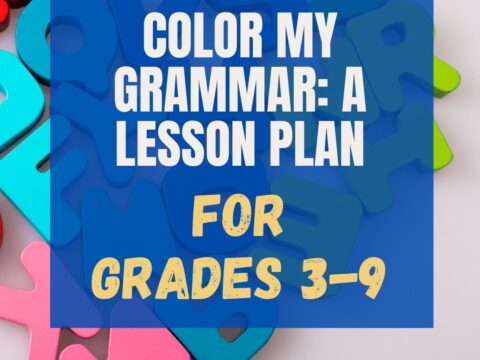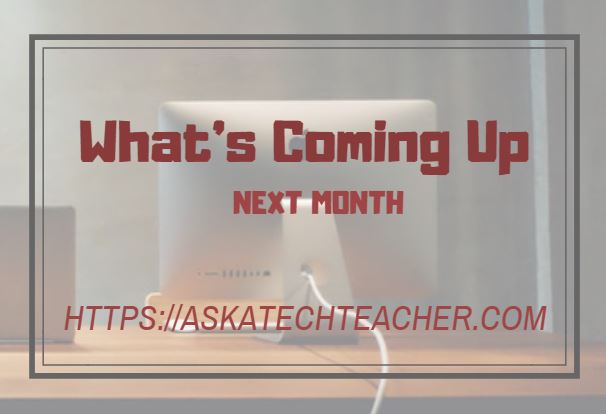 Yesterday, I talked about students blogging. Today, let’s look at teachers blogging. I’ve been doing this for about four years and have a short list of things I wish I’d known before starting. That first post–putting myself on the line, ignoring that I had no hits, wanting to approve comments from spammers because that would look like someone loved me–I thought that was the hard part. The second post was easier and so it went.
Yesterday, I talked about students blogging. Today, let’s look at teachers blogging. I’ve been doing this for about four years and have a short list of things I wish I’d known before starting. That first post–putting myself on the line, ignoring that I had no hits, wanting to approve comments from spammers because that would look like someone loved me–I thought that was the hard part. The second post was easier and so it went.
But somewhere around the twentieth post, I figured out that I had to do blogging right. I couldn’t simply show up, spout off and slink away. There was a lot more to ‘blogging’. I could have quit–it was getting to be a lot like work–but I enjoyed the camaraderie with like-minded souls. I learned a lot about writing by doing it and could transfer those lessons to my students. So I honed my skill.
Now, years later, there are a few items I wished I’d known early rather than late. Let me share them with you so you don’t have the hard lessons I did:
- only reblog 10% of someone else’s post. If you’re on WordPress and push the ‘reblog’ button, they take care of that for you. But if you copy someone’s post and give them attribution, you blew it. You have to get permission if you are reposting more than 10% of someone’s work. Where was I supposed to learn that?
- hot links are bad. What’s a ‘hot link’ you say? That’s when you use a picture on your blog that’s posted on some other server. I don’t do that–I don’t even know how to do it. Let me posit a scenario. You find an image (in the public domain) that you like. You drag it to your blog post and drop it. It looks great. What a wonderful shortcut to save-insert-find media you usually have to do. But–it’s a no-no. You know you’ve hotlinked if you bring up that beautiful picture (that’s in the public domain) and there’s no link for where it’s hosted. This, like ‘reblog 10%’, I learned the hard way (thank you, Jack Reacher, for that term).
- how long it takes to make a post. Most bloggers start by journaling–chatting about their life. When they get few readers, less comments, and realize they’re talking to an empty room, they give up blogging as another failed experiment on the pathway to success. Blogging is no longer journaling. Now, blogs focus on a theme, their popularity closely tied to the author’s voice and/or resources provided. Readers don’t want to see typos, grammar errors, or a waste of their time. In fact, you have to write-edit-rewrite-submit to get your blog posts ready for the public. Pretty much what your English teacher told you to do in high school. When your brain starts throbbing like a hand slammed in a car door–that’s when you realize blogging is a lot like work.
- be myself. Let my voice take over. Like with any storyteller you love, it’s not so much the plot they unfold (there really are only so many plots) as how the author delivers it. That’s voice and that’s why readers will keep coming back to your blog. They want to know how you connect the dots. Humor? Empathy? Pithy? Whatever it is, make it yours and stick to it.
- it’s easier than it sounds. So many of my fellow writers think blogging takes hours a day. It does, but only when you first start, as you’re getting settled. Then, you get into a rhythm:
- Jot an idea down as a ‘draft post’ using whatever digital device you like (mobile, iPad, laptop, computer. Me, I’m always at my PC so that’s what I use)
- flesh it out when the muse hits. That’s the problem, you say. I don’t have time to let ‘the muse hit’. I’m going to respectfully disagree, even though I don’t know you that well. You are a writer. The muse always lurks in your subconscious, ready with her opinions, attitudes, annoyances. You have trained yourself to ignore her, but now it’s time for a new habit. Write when you want–whatever comes out. In this case, flesh out the blog post.
- review and schedule the post. I do a week at a time.
- it’s harder than it sounds. You have to pay attention to proper writing skills, be careful to not plagiarize content or media, be a friend to your ebuddies, be constantly and brilliantly inspired, and be a tech genius who can fix all those geeky things that make social media work. Yikes!
That’s my list. What’s on yours?
Click for a lesson plan on blogging in the classroom.
Jacqui Murray has been teaching K-18 technology for 30 years. She is the editor/author of over a hundred tech ed resources including a K-12 technology curriculum, K-8 keyboard curriculum, K-8 Digital Citizenship curriculum. She is an adjunct professor in tech ed, Master Teacher, webmaster for four blogs, an Amazon Vine Voice, CSTA presentation reviewer, freelance journalist on tech ed topics, contributor to NEA Today, and author of the tech thrillers, To Hunt a Sub and Twenty-four Days. You can find her resources at Structured Learning.



































